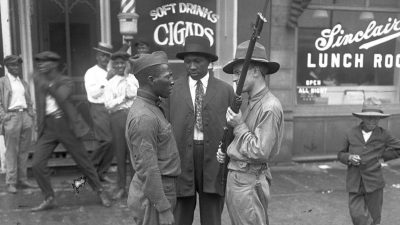www.invexnews.com/item-759875-the-cosmopolitan-modernism-of-the-harlem-renaissance
The Cosmopolitan Modernism of the Harlem Renaissance
The first time the Metropolitan Museum of Art devoted an exhibition to the vibrant history of Harlem was in 1969. “The show was meant to signal the institution’s commitment to civil rights and the Black political struggle and to bring Black and white audiences together in the celebratory space of the museum,” Rachel Hunter Himes writes in April’s Books & the Arts, “but something was missing”: “Not a single painting, sketch, or sculpture was on view….No fine art by Black artists—no fine artwork of any kind, in fact—appeared.” In response to the exhibition, artists formed the Black Emergency Cultural Coalition and picketed the show, carrying signs that read “Harlem on Whose Mind?” and “Whose Image of Whom?” Reviewing a new Met show, “The Harlem Renaissance and Transatlantic Modernism,” curated by Denise Murrel, Himes argues this exhibition is part of this lineage of activism: “The show is an open-ended exploration of the era’s art, gathering paintings, sculptures, prints, drawings, and photographs by well-known and relatively unknown artists into a vibrant and searching collage that offers us a wide range of views on the Harlem Renaissance’s origins and meanings and the ways the movement found artistic expression.” Including art that goes beyond the bounds of New York, the exhibition does something else than just correct the record: It “showcases the artistic variety and vicissitudes of the Harlem Renaissance” and reminds us “that ‘Harlem’ was more an ethos than a geography; the movement’s ‘transatlantic modernism’ extended far beyond New York and even North America.” Read “The Cosmopolitan Modernism of the Harlem Renaissance”
Print




